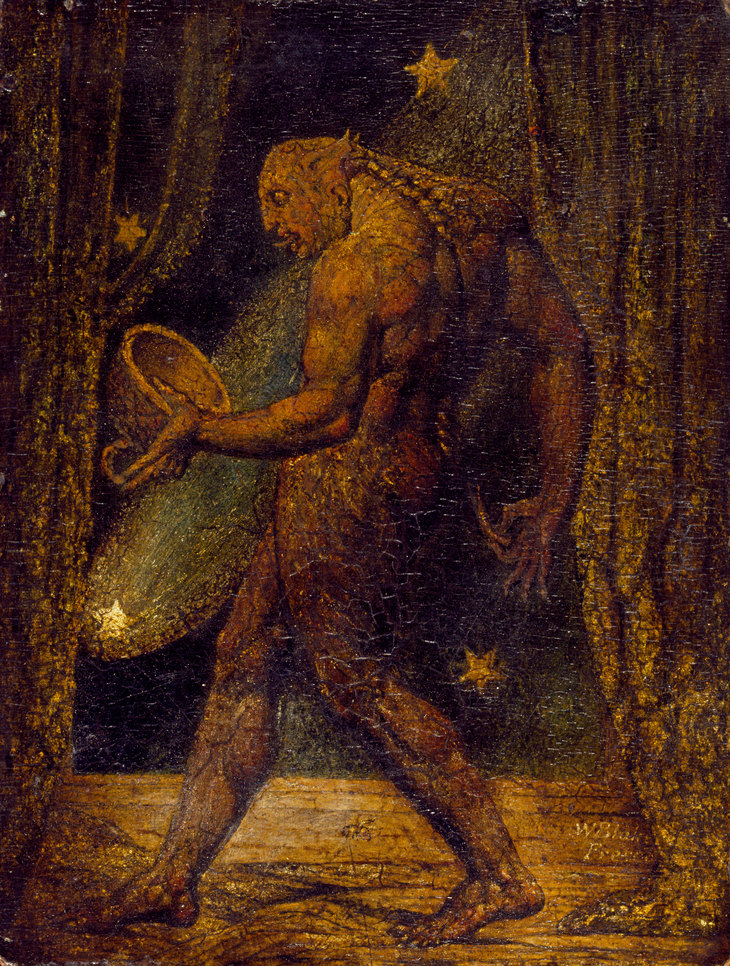The Tate's Massive William Blake Exhibition Is Here... And This Is What We Thought Of It
Looks like this article is a bit old. Be aware that information may have changed since it was published.

A few wretched pictures. A farrago of nonsense, unintelligibleness, and egregious vanity, the wild effusions of a distempered brain.
Not our hatchet job, but that of the one critic who attended William Blake's disastrous exhibition in 1809. The humiliation caused the divisive artist to shrink into the shadows, emerging with paintings of a rogue's gallery of spirits, which he claimed to have spoken with. Plenty of people thought he was off his rocker.

Though Blake pulled a wealth of vignettes from the Bible, Shakespeare, and the Divine Comedy, trying to 'get' some of his self-narrated works is like trying to 'get' Ulysses or Revolution 9. It's not like the meanings have been clouded with time; many of Blake's contemporary fans were left furrow-browed by his stubbornly oblique books, buying them almost entirely for the pictures. That 'farrago of nonsense' insult wasn't entirely uncalled for.
Happily, the strangeness of Blake's subject matter gives carte blanche to shrug off the narrative, and revel purely in the artistry.
He seems to have most relished conjuring up fiery dystopias; monsters fresh out of nightmares. Ripped ne'er-do-wells are sucked into the abyss in A Vision of the Last Judgement. There's a near-comical death in The Six-Footed Serpent attacking Agnello Brunelleschi. The Ghost of a Flea — a sad, Shrek-like creature, treading celestial boards — is as melancholy as it is eerie. These works are like a good horror film: difficult to watch, impossible to take your eyes off.

Though Blake pioneered the art of 'relief etching', its palette of inky blues, bloody reds and dull golds were actually often applied by his wife, Catherine. We learn how visionaries like Blake are rarely a one-man band. From his long-suffering spouse, to patrons like Thomas Butts and painter John Linnell (who actively encouraged Blake's forays into the Twilight Zone), it's clear that William Blake couldn't have been William Blake without them.
The only part of the exhibition that under-delivers are its calling cards. The 'recreation' of Blake's failed exhibition (held above his family's hosiery business in Soho) feels sanitised — just another part of the gallery — while the 'realisation' of Blake's 30-metre-tall versions The Spiritual Form of Nelson Guiding Leviathan and The Spiritual Form of Pitt Guiding Behemoth, can only be delivered piecemeal on a projector. They hardly deliver on their 'grand scale' promise, and would be infinitely more impressive projected onto the outside of the Tate itself.

What emerges from this bizarre and beautiful blockbuster is a man as complex as his works: one who lambasted his contemporaries for their greed, yet bemoaned not being paid enough himself. One who scoffed at how few admired his genius, yet who was hellbent on whipping up works that befuddled. William Blake, it turns out, was human, even if his artworks were anything but.
William Blake is at Tate Britain, 11 September 2019-2 February 2020. Tickets £18
Last Updated 25 October 2019




